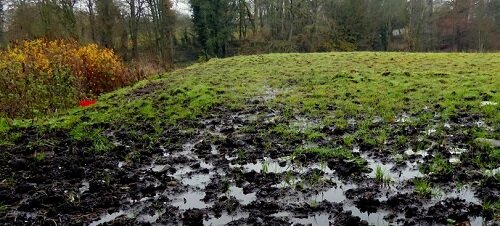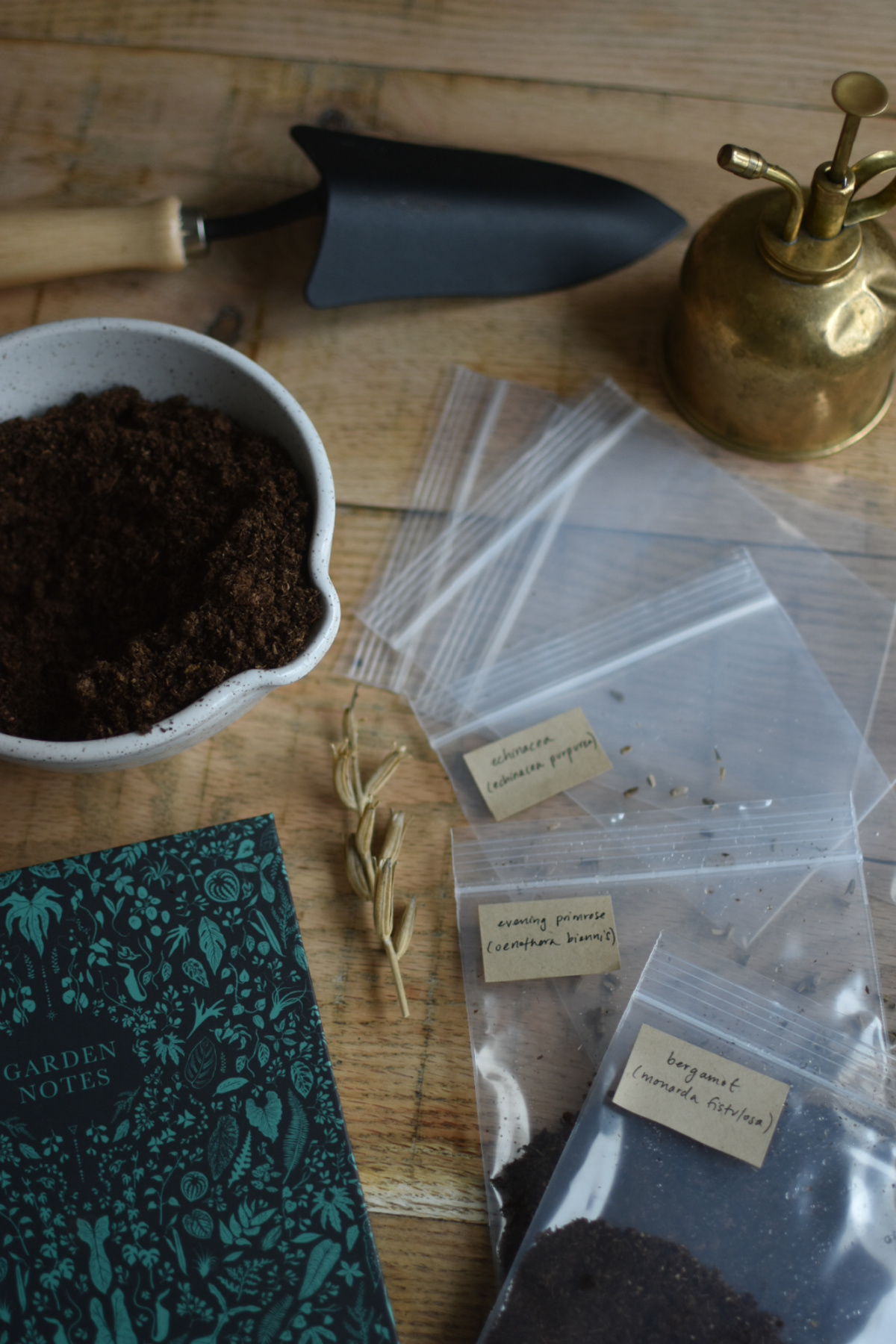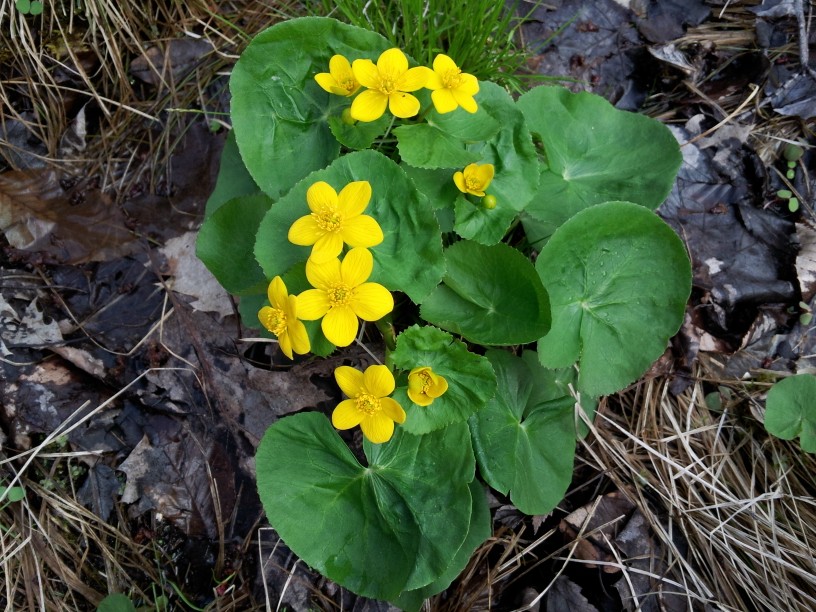At this time, the seeds of Marsh Marigold (Caltha palustris) are likely ready for harvest.
Marsh Marigold emerges from the ground, flowers, sets seed and disperses its seed by early June and then goes dormant by early summer. Marsh Marigold is an ideal plant for use in those wet places where few other plants will grow. The seed is easy to collect and plant and germination rates are high.

CAUTION! – It has been reported that all parts of this plant can be a skin irritant to some people, possibly resulting in rashes and dermatitis. Accordingly, it may be best to wear gloves while harvesting seedpods.

Seed Collection:
Seeds mature in late May to early June and they are contained in clusters of tiny upright pods that split open when mature. Each seed is quite small, about the size of a grain of table salt. The pods change from light green to yellowish brown when they mature. As the pods dry, each will split open to release its seeds. Each capsule may hold several dozen of these tiny seeds.

Collect seed stalks with pods attached when they first begin to change color and as the earliest pods begin to split. To do so, simply cut the seed pods off the flower stems with a sharp knife or garden scissors.

https://www.ecofriendlyincome.com/blog/how-to-propagate-marsh-marigolds-caltha-palustris
Processing of Harvested Seed and Storage:

Place seed stalks inside a paper bag to allow them to dry. After a week or two, the pods should have opened; simply shake the bag to release all of the seed. Do not let seed dry out any further as germination may suffer.

Carefully empty the seeds from the paper bag into a labeled ziplock bag (plant name and date); then partially fill it (1/3 full) with moist potting soil and seal the top. Carefully mix the seeds into the moist soil by gently shaking the bag, inverting the bag, and also gently pressing on the outside of the bag with your fingers. Leave in the refrigerator for 60-90 days before germinating.
Propagation by Seed:

Photo Credit: valkyrieh116 (https://www.flickr.com/photos/valkyrieh116/4360193931/)
Lightly sprinkle seed over flats of potting mix and keep the soil of each container moist until germination occurs. Germination can take five to 10 days. Then transplant the contents of each container into the spots you’ve selected to establish these plants. Alternatively, if sowing outdoors, simply sprinkle the contents of each ziplock bag onto areas where you want the plants to establish: (a) saturated bare soils, or (b) on top of standing water (such as a pond) to allow the seeds to naturally disperse.
Seed-started plants may take about three years to mature and bloom.

For more information about Marsh Marigold, please view my prior post, What Wildflower Begins Blooming This Week? (April week 3) (published on 4/20/2024).
Happy harvesting!
